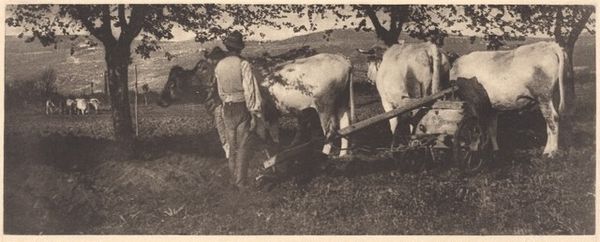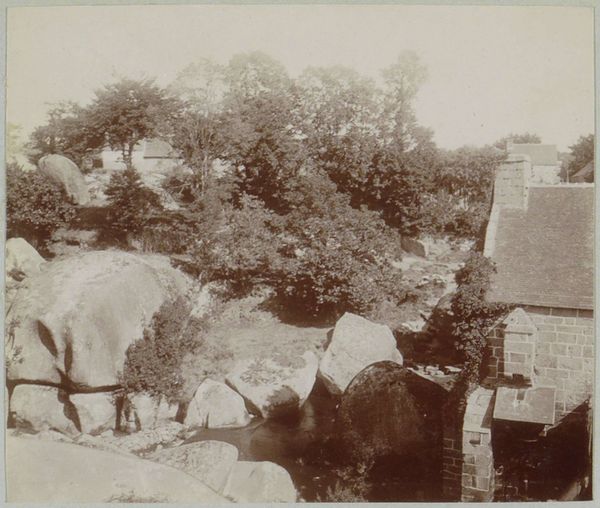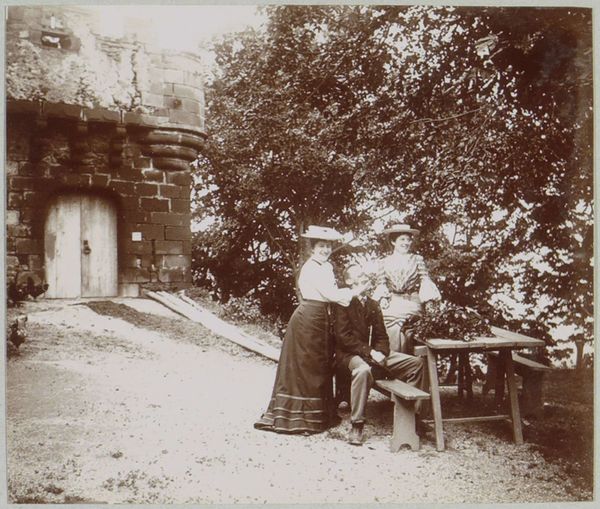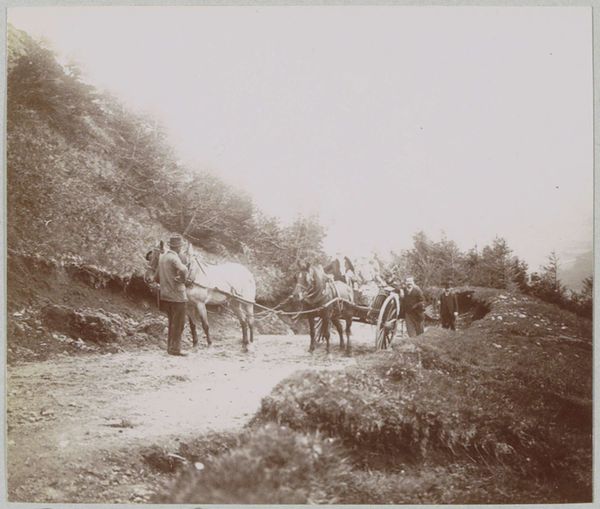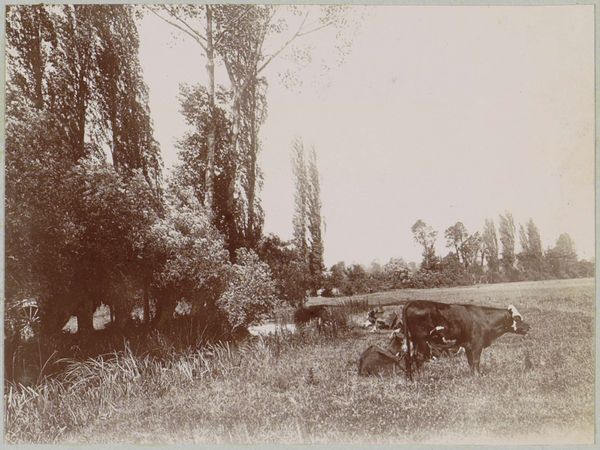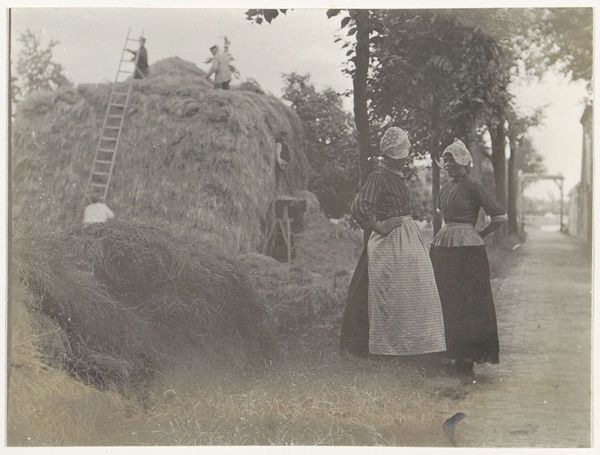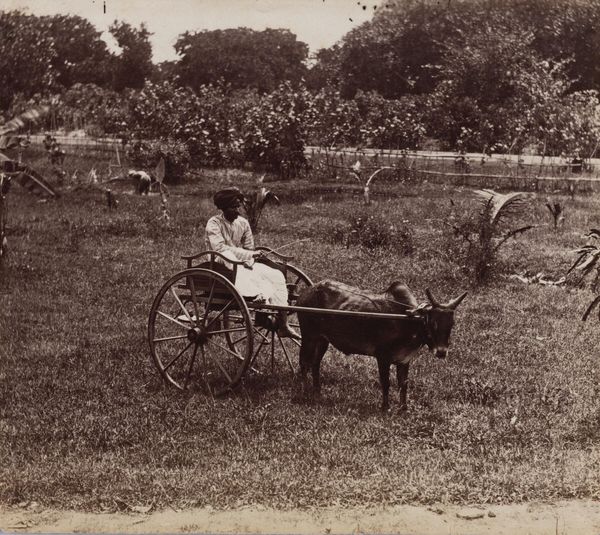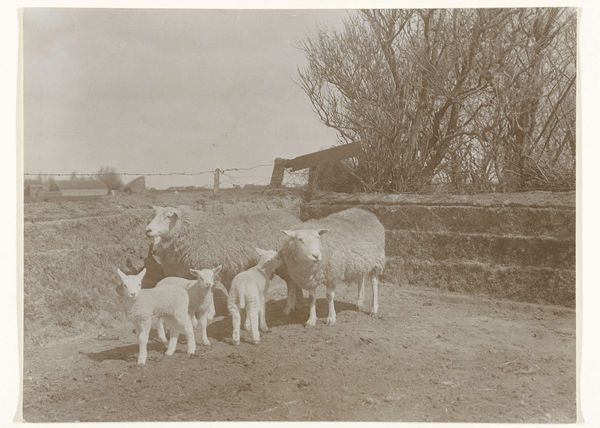
#
wedding photograph
#
black and white photography
#
animal
#
centre frame
#
black and white format
#
b w
#
black and white theme
#
black colour
#
black and white
#
monochrome photography
#
monochrome
Copyright: Public domain
Curator: Edouard Debat-Ponsan offers us a glimpse into rural life with this piece, titled "Peasants scene." Editor: It's instantly evocative. There's such a tangible, almost austere mood created by the monochromatic palette and the focus on the working people. It makes you think about what daily routines, life and work were. Curator: Absolutely. Look closely at the composition. The figures are positioned around the well, a central point, almost a meeting place, suggesting its importance to this community. The monochrome choice really pushes one to consider material concerns in depth: the textures of their clothes, the rough stone, even the mud. Editor: It speaks to the social context too. Consider who has access to this well and water. Look at how the animals, specifically, are staged—it feels like Debat-Ponsan invites us to consider their labor. Were it colour, that focus would become obscured, don't you think? Curator: In that way, it moves beyond just being a record and acts as a commentary on labor, doesn't it? Notice how Debat-Ponsan made his marks: the subjects’ clothes versus the background—it looks rough hewn. I wonder about his choice of materials… Editor: It highlights that intersectional reading of what could have otherwise have just been called "pastoral beauty." How often are these farmhands truly seen or acknowledged? The contrast also highlights that access—those materials available in certain locations may simply become a sign of how hard people work! I notice that both children do not wear shoes; their contact with the earth, a key marker in identity in a work so fixated with the physical world. Curator: Interesting point. I suppose, stepping back, it raises questions about how art portrays and elevates everyday labour versus only the elite class, for what reasons, and what value it imbues, whether wittingly or not. The rough textures add to that, providing contrast—it makes this rural setting quite palpable, really—one could get lost in it, materially or not! Editor: Definitely. This seemingly simple snapshot actually unravels many crucial considerations for viewers invested in cultural criticism! I am quite grateful that the themes are complex here! Curator: Indeed. There's something quite moving about viewing this with an eye to how and what things are made and, importantly, who is responsible. Editor: I think approaching images like these requires viewers to look closely. We can bring awareness not only to what we’re consuming when we reflect on who, what and how something is built into a product of art!
Comments
No comments
Be the first to comment and join the conversation on the ultimate creative platform.
